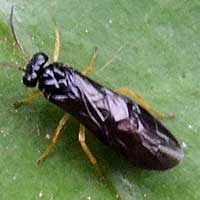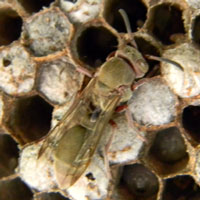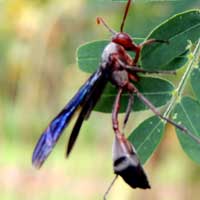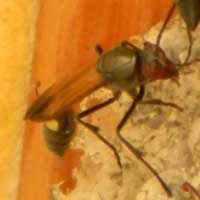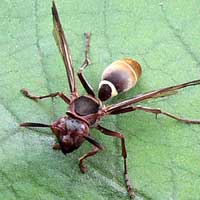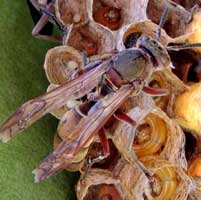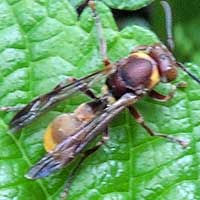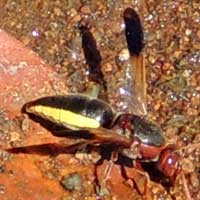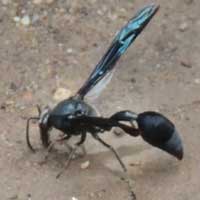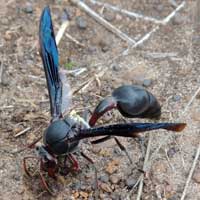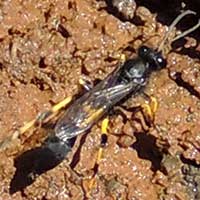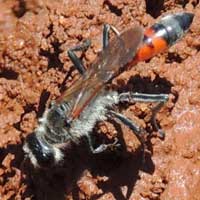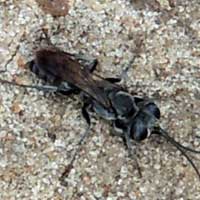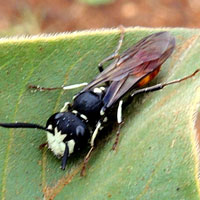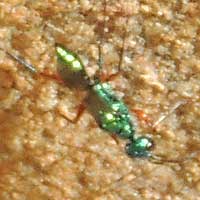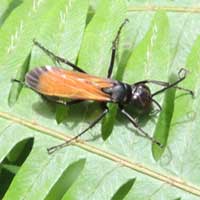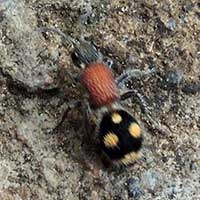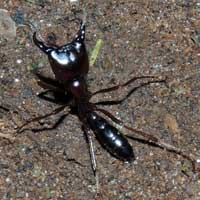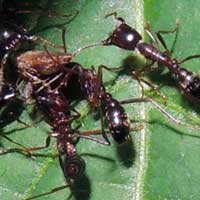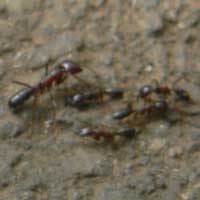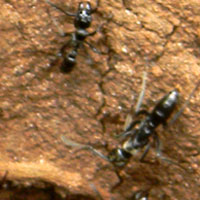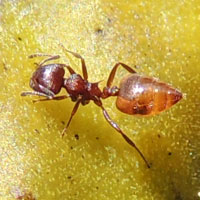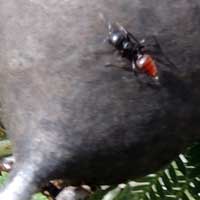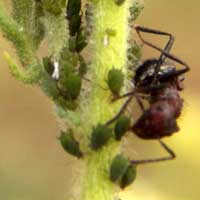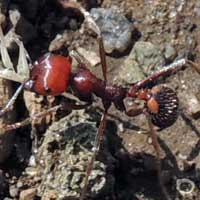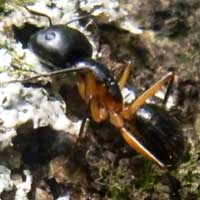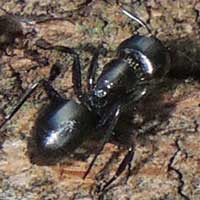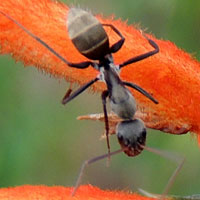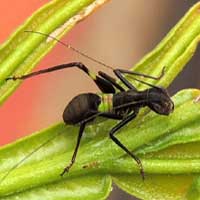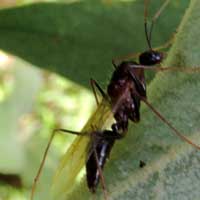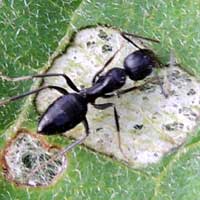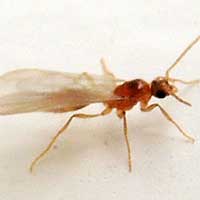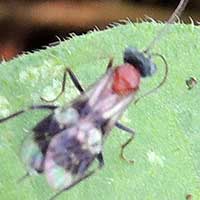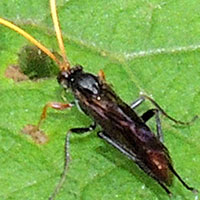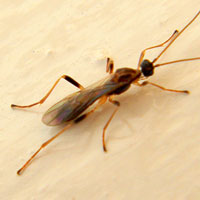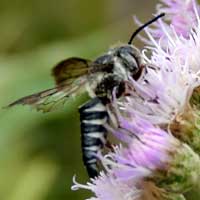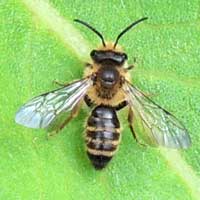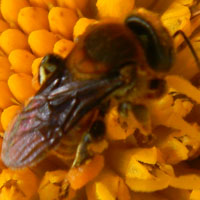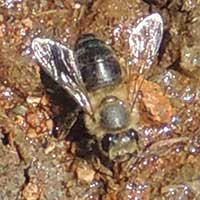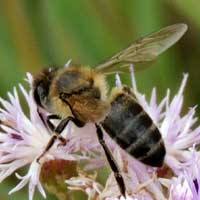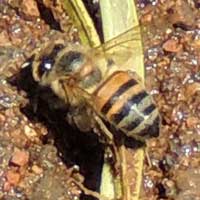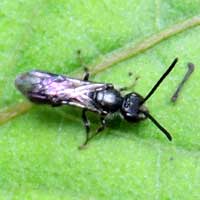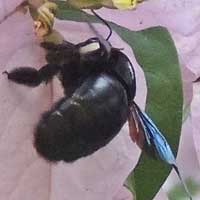The common name is one word because these are not true flies, but rather a primitive group of plant-feeding wasps.
Many kinds of paper wasps can be found with nests of paper placed under shelter offered by buildings.
Reddish brown wasp with very thin waste and blue-black wings.
Some paper wasp species are aggressive others not. This one seems docile. Dark brown w/ bright yellow spots on abdomen.
This relatively small paper wasp was observed in Nairobi.
A dull colored species tending a paper nest with eggs, larvae and pupae.
Yellow shoulders and last few segments of abdomen distinguish this species from Kakamega.
This robust yellow and brick-red wasp was taking water at a river crossing in the Rift Valley.
Large wasp with narrow waist and blue-black wings. A pale segment near end of 3rd pair legs seems distinctive.
This wasp is gathering mud from a wet road surface to use as building matterial for a pot-shaped nest.
These wasps build tube shaped nests and fill them with paralized spiders.
Most often seen on the ground in soft soil area digging a tunnel into which it will provision insect prey.
Predatory wasps gather and put their prey into a chamber in the soil or else built from mud.
Enters cavities and crevices as it hunt and has big eyes to help in its search.
This is a male, but still sports warning colors despite lacking a sting. He will take nectar to fuel his mate searching.
Shiny emerald green and red-legged wasps that run quickly as they investigate crevices for roaches.
Iridescent blue or black, often with reddish wings. Note the curled ends of antennae.
Females like this one resemble a fuzzy ant but are solitary. Males have wings but its hard to match the numerous species.
Driver Ant in Kiswahili. Massive columns of ants with some very large soldiers with super sharp mandibles.
The tactical methods of driver ants send all scurring for safety!
Usually seen in dense columns of fast moving ants. Painful sting. Mixed sizes in the column.
Some are called bullet ants due to shape and pain of sting. Cylindrical shape. This one from Saiwa Swamp.
The tear-drop shaped abdomen makes this genus of ants easy to recognize. Small, just 3 mm long.
Several different acrobat ant species plus a few others make use of the hollow thorns on acacias to nest inside.
Many kinds of ants form relationships with sap-sucking bugs. These big ants tend aphids.
Two meter diameter nest clearing in savanna. Some workers have bigger heads/mandibles than others. Harvests seeds.
This unknown variety of diurnal ant was seen on a tree trunk in Kitale; it is about 4mm in length.
Large ants with powerful mandibles and shiny black throughout. Nest in dead or compromised tree bowls.
Fairly large, nearly black ant common on foliage in highland areas of Kenya during daylight.
Birds simply don't eat ants. By natural selection many insects, such as this cricket, have evolved to look exactly like ants.
Worker ants in the colony never get wings. Only reproductive males and females develop wings.
These small ants, about 4mm, were foraging on foliage during day. Jet black and with one petiole segment.
The vast majority of queen ants that emerge from ant hills become food for birds, bats and spiders.
There are thousands of ichneumon wasp species in Kenya. Their parasitic activities are vital to farming success.
The long antennae are loaded with chemoreceptors to aid in locating hosts for this parasitoid.
These even small, delicate wasps do not sting; instead they are the farmer's ally by killing pest insects.
Short, thread-wasted wasp, squared-off head, black and yellow bands on abdomen. Many, many species predatory on insects.
Cuts away circles and ellipses from leaves to line its solitary nests.
Compact shape, short thread-waist, two pairs of wings, dense hairs on legs and body.
Is this a honey bee variety? All dark abdominal segments.
Golden brown bee often numerous and working together at a good nectar/pollen source. Unlike most bees, lives in large colonies.
A more colorful honey bee.
Many kinds of sweat bees are found around the world and they are rather uniform in appearance. Specific id usually requires a microscope. Important pollinators.
A very large carpenter bee exhibits adaptibility by attending flowers of exotic bouganivillea.
